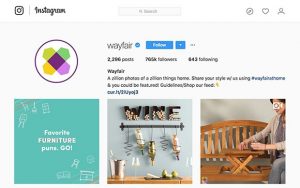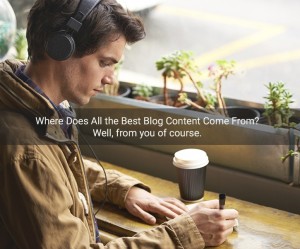
The common thread of almost every Fast Company story is a creative person who had a compelling idea and managed to spin it into a successful company or organization that continues to innovate.
In case you missed them the first time around, here are some stories that inspired or fascinated us during 2014. You’ll find teenage lingerie entrepreneurs, feminist coders, crossword-puzzle game changers, the engineer shaping the future of wearables, and more.
1. Building The Next Pixar
Pixar alums (many of whom joke that they’re a small club, because no one wants to leave) have gone on to lead in a range of fields, from entertainment to consumer technology to healthcare. Fast Company spoke with more than a dozen executives, entrepreneurs, and storytellers from all eras of Pixar’s three-decade history, all of whom have moved on but attest that Pixar’s influence over their ongoing work is invaluable and profound.

Whether they’re selling healthy snacks or building potentially lifesaving technology for type 1 diabetics, these alums are applying Pixar’s values in unexpected but highly successful ways.
2. “I” Is For Innovation: Sesame Street’s Secrets To Staying Relevant
If you are under the age of 50, there’s a good chance you are fiercely attached to Sesame Street, the show that shepherded so many of us through our toddler years.
You may remember sitting in rapt attention, wondering if anybody would believe that Mr. Snuffleupagus was real, or giggling hysterically about Oscar the Grouch’s musical ode to trash. For generations of viewers, Sesame Street is a portal to a simpler, more innocent time in their lives. This creates something of a quandary for the show’s producers: how do you keep evolving a show so it doesn’t get stale without offending its devoted fans?

Carol-Lynn Parente, executive producer of Sesame Workshop, talked with Fast Company about how you keep a 45-year-old brand fresh—yet familiar at the same time.
3. This Company’s Brilliant Marketing Strategy Makes Yours Look Sad and Boring
Over the last decade, Manhattan Mini Storage’s ads have become increasingly provocative. The company has perfected its distinct, snarky voice with dozens of billboard ads that address hot button issues on New Yorkers’ minds including gay culture, right wing politics, abortion rights, and perhaps most shockingly, why the Mets even bother calling themselves a professional team.

People often ask which advertising agency hatches MMS’s hugely successful campaigns, but the truth is that the branding is an in-house job. For the last two decades, Archie Gottesman, chief branding officer of Manhattan Mini Storage, has been carefully crafting the ads for MMS, the company that her father and uncle founded in 1978. She spoke with Fast Company about their approach to advertising—and why groupthink makes everything suck.
4. Changing The Bra Industry For Young Girls
High-school student Megan Grassell couldn’t find cute, age-appropriate bras for her younger sister, so she made her own. Now her company, Yellowberry, is being held up as a model of innovation, design, and feminists united against the sexualization of girls.
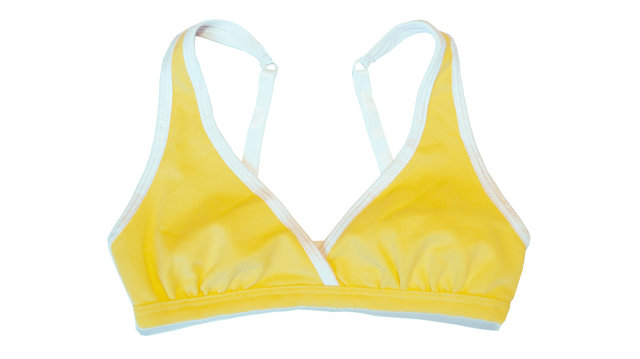
5. The End Of Shampoo
With Purely Perfect, Michael Gordon hopes to change the American shower regimen and kill shampoo along the way. “The problem with shampoo is you have to make lots of product to try and correct what the shampoo did,” says Gordon. The chemicals in shampoo strip hair of its natural oils, which necessitates conditioner.
Gordon’s formula, on the other hand, relies on fatty alcohols, which are mild cleansers, so there’s no need to counteract with additional product. That means less time in the shower, less wasted water, and less stuff to buy.
6. The New York Times Innovates The Crossword
Since starting at the Times straight out of Swarthmore college last year, Anna Shechtman has brought some youthful edge to the 72-year-old quadrant of the paper.
Not only did Shechtman get crossword editor Will Shortz to include clues like “State of being awesome, in modern slang” (answer: epicness) in her own puzzle, she has influenced dozens of other grids, helping to justify more modern words and clues.
7. This Lingerie Company A/B Tests The World’s Hottest Women To See Who Makes You Click “Buy”
Sex doesn’t sell, so forget the boudoir shot. Blondes don’t work. Props distract. Couches are fine. Playing with hair is ideal.
Those are some of the insights the lingerie company Adore Me has learned from testing the photos of models wearing its sexy products online.

For each bra, Adore Me shoots multiple versions of images to run on its website. The distinctions between the pictures might include different models wearing the same set in the exact same position, or the same model in the same set in a different position, for example. Then, like any good tech company, it tests the options to find out which one sells better.
8. The Coder Grrrls of Double Union, San Francisco’s Feminist Hacker Space
Unlike Sheryl Sandberg’s brand of feminism, which puts the responsibility on women to lean in, the women of Double Union—San Francisco’s feminist hacker space—take a structural approach. It’s the system that needs fixing, not women.
The stated goal of Double Union is to create a safe space for women, and it does that in many ways. DU tries very hard to make its members feel welcome, while actively keeping “creeps” out. Most of the time the door stays shut and locked. People take the anti-harassment policy seriously. Can a handful of members of a feminist hacker space make significant strides in how women in tech are treated outside their protective doors?
9. Inside Rent the Runway’s Secret Dry Cleaning Empire
Most people think of Rent the Runway—which rents designer dresses at a fraction of the retail price for women to wear to events—as an innovative fashion retailer powered by impressive technology. And it is.
But, when the company moves to its new 160,000 square foot warehouse, it will also officially become the nation’s single largest dry cleaner, as measured by pounds per hour.
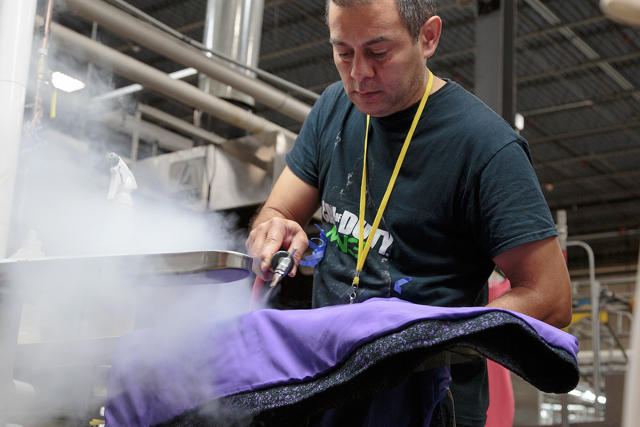
We spoke to the unsung heroes—who, by the way, are harder to hire than engineeers—who make sure each RTR dress that shows up on your doorstep looks just as glamorous as it did the first time someone took it off a hanger.
10. The Surprisingly Profitable Rise Of Podcast Networks
In the last six months, three podcast networks have popped up, from established public radio players: Infinite Guest from American Public Media, SoundWorks from PRI, and Radiotopia from PRX. Meanwhile WNYC has added more podcasts to its roster of shows, which includes the beloved, and very popular, Radiolab. This American Life, the radio show, is now spawning a podcast called Serial. Online print media has also gotten the message: Slate has doubled its podcast output in the last two years.
With more people listening than ever, and real money to be made in a media landscape with disappearing ad dollars, of course radio veterans are flocking to podcasts. “There have been a number of successful podcasts that have generated fans and made money—everyone wants to see if they can take a crack,” says Steve Nelson, the program director for Infinite Guest, American Public Media’s brand new podcast network.
11. The Hidden Messages In “Game of Thrones” Costumes
Game of Thrones features dragons, blood magic, white walkers, dire wolves, and all sorts of made-up creatures, but its world is a “fantasy reality,” to use the words of the show’s costume designer Michele Clapton. In spite of all the otherworldly elements, viewers still have to believe that the Seven Kingdoms could exist somewhere in the universe.
Much of the credit for the plausibility of the HBO show’s made-up world goes to Clapton, who has overseen costume design throughout the show’s first three seasons. For her, the key is looking at costume design as a mode of storytelling. “It’s so easy to draw a pretty dress in a fun way,” Clapton told Fast Company. “But this is so much more about finding the right look and telling so much more about that character, and that’s what I really, really enjoy: the storytelling….Each thing will tell a story. It might look like a costume is wrong, but actually it’s supposed to look like that. It’s telling you something about the character at the time.”
12. The Softer, More Wearable, Future of Wearables
Amanda Parkes, the founder of Skinteractive Studios, is bridging the worlds of tech and fashion to make sure next-gen wearables look less like watches, and more like scarves.
Wearables of the future will cover the entire body and do a host of things we can’t yet imagine. She spoke with Fast Company about the real future of wearables, and what we’ll see in new categories of yet-to-be-created products.
13. Gentrification, Inc.
New York real-estate developer Jamestown has perfected the art of creating the Next Hot Neighborhood. This is its formula—how gentrification really happens—and where you fit in.
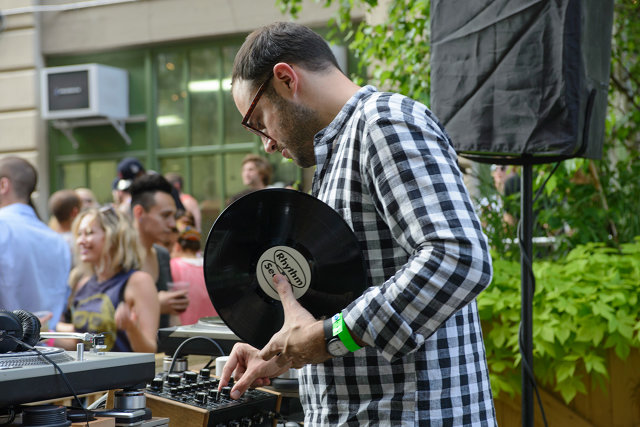
(387)



